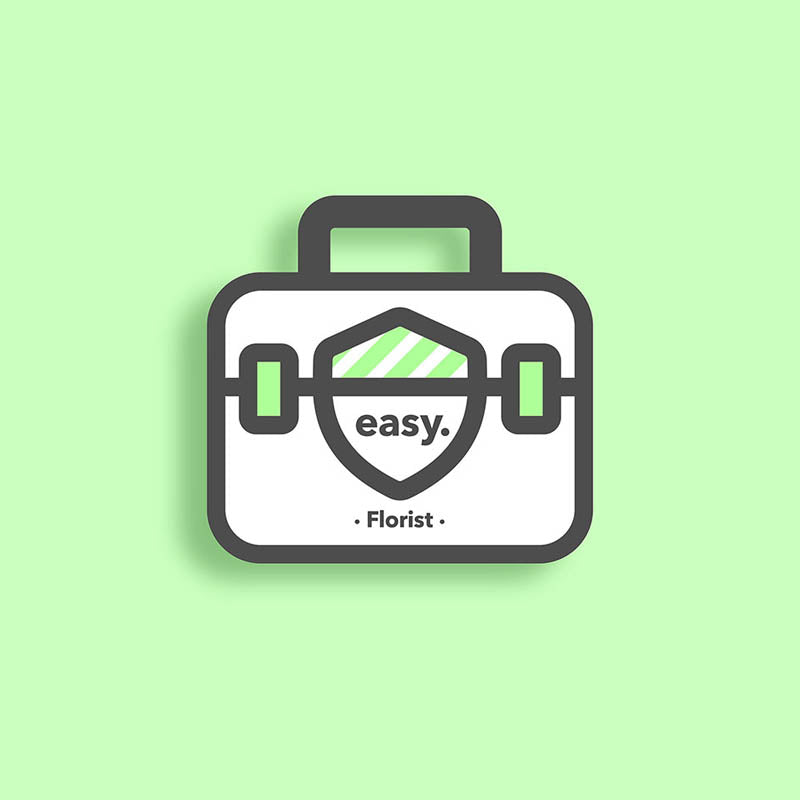
Florist Health and Safety Templates & Guidance
Pre-filled, editable health and safety templates for florists and flower shops — including risk assessments, policies, fire safety templates, COSHH documents, and more to keep your business safe, professional, and compliant.

Take Control of Health and Safety in Your Florist or Flower Shop with Easy-to-Use Templates
Simplify health and safety management in your florist or flower shop with our industry-specific templates. Whether you’re running a busy high-street florist, managing a small independent flower shop, or overseeing a team of florists across multiple locations, our editable templates help you stay compliant with health and safety regulations while protecting staff, customers, and delivery drivers from everyday risks in a fast-paced retail environment.
Many templates come pre-filled with detailed, florist-specific content — from risk assessments and health and safety policies to fire safety forms, COSHH documents, accident reports, and staff safety guidance. This makes completion quick, accurate, and stress-free. With our ready-to-use tools, you can focus on creating beautiful arrangements, growing your business, and delighting customers while maintaining the highest standards of safety and compliance.

Safety First: The Secret to a Thriving Florist or Flower Shop
The vibrant displays, the scent of fresh flowers, and the buzz of happy customers are what make florists and flower shops such inviting places. But behind the scenes, there’s one factor that underpins the success, credibility, and long-term sustainability of every florist business: health and safety.
Protecting Staff from Everyday Hazards
Florists handle sharp tools, heavy buckets of water, and deliveries of bulk flowers and materials. Without the right procedures, staff may suffer cuts, strains, or slips on wet floors. Clear training, risk assessments, and simple safety measures reduce accidents and keep your team confident and productive.
Creating a Safe and Welcoming Experience for Customers
Customers trust flower shops not only for the quality of their arrangements but also for the safe, clean, and welcoming environment they provide. From well-maintained displays to clutter-free walkways, strong health and safety practices give customers peace of mind and encourage repeat visits.
Meeting Legal and Compliance Standards
Every florist is responsible for meeting essential health and safety requirements. Failure to comply could lead to fines, reputational damage, or even forced closure. Using ready-to-go templates helps ensure your flower shop stays compliant with key regulations without unnecessary stress or expense.
Boosting Staff Morale and Retention
A florist that puts staff safety first fosters a positive workplace culture. Employees who know their wellbeing is prioritised are more engaged, less likely to take time off due to injury, and more committed to delivering excellent service.
Adapting to Challenges with Confidence
From unexpected hazards like water leaks to the demands of peak trading seasons, flower shops face unique pressures. Florists with robust health and safety procedures can respond quickly and effectively, minimising disruption and protecting both staff and customers.
In Summary…
Health and safety in a florist or flower shop is more than a box-ticking exercise. It’s a commitment to your staff, your customers, and your business reputation. By investing in the right health and safety templates and guidance, florists not only safeguard everyone who walks through the door but also build a stronger, more successful business for the future.
Top 3 Health and Safety Hazards for Florists:
-

Cuts and Puncture Wounds
View ProductSharp knives, scissors, wires, and thorny stems are part of daily florist work, putting staff at risk of cuts, lacerations, or puncture wounds. To reduce harm, florists should use well-maintained tools, wear protective gloves when handling thorny plants, dispose of sharps safely, and train staff in correct cutting techniques.
-

Manual Handling Injuries
View ProductFlorists regularly lift heavy water containers, boxes of stock, and display stands. Poor technique or lifting too much can cause strains, sprains, or back injuries. Controls include providing manual handling training, using trolleys or sack trucks, encouraging team lifts for awkward loads, and storing heavier stock at waist height.
-

Slips, Trips, and Falls
View ProductWater from flower buckets, spillages, and cluttered walkways make slips and trips one of the most common hazards in florists. Staff and customers may suffer sprains, fractures, or head injuries. Risks can be mitigated by using absorbent mats, cleaning up spillages immediately, keeping aisles clear, and ensuring staff wear sensible, slip-resistant footwear.

Why pay expensive consultant fees when you can manage health and safety yourself?
Improve your compliance while saving time and money by creating health and safety documents, customised to your business, yourself. Our health and safety range for florists and flower shops covers a suite of essential templates including health and safety policies, risk assessments, COSHH forms, fire safety documents, health and safety guidance, safety posters and more.
Benefits of managing health and safety yourself...
-

Improve safety
Health and safety at work is about preventing accidents, incidents and ill-health by assessing the work environment, the activities within it, and taking appropriate action.
-

Ensure compliance
Our ready to use templates, many of which are pre-filled, will enable you to quickly increase your compliance to health and safety laws and regulations.
-

Save money
With health and safety consultants often charging upwards of £400 per day, there is a better way. Take control and save yourself time and money.

Overcoming Compliance Challenges in Florists & Flower Shops
For many florist and flower shop owners, health and safety compliance can often feel like an overwhelming burden. Already managing the pressures of running a business on a limited budget and tight schedule, these entrepreneurs may struggle to allocate sufficient time and resources to deal with health and safety matters fully. While the intention to maintain a safe working environment is always there, the practicalities—such as training staff, replacing worn tools, managing hazardous substances, and carrying out regular checks—can be taxing.
This can sometimes lead to corner-cutting, which not only puts staff and customers at risk but could also result in legal consequences and damage to the shop’s reputation. It’s a delicate balancing act, but one that highlights the essential role health and safety plays in the success of every florist.
At easyhealthandsafety, we aim to take the friction out of compliance for florists and flower shops by providing health and safety products and guidance so simple to use, they’re almost enjoyable.
Frequently Asked Questions
Florist Health and Safety FAQs
How can I create a risk assessment for my florist shop?
The easiest way to create a florist shop risk assessment is to use a pre-filled, editable template designed specifically for your industry.
To create a risk assessment from scratch, start by identifying who could be harmed — such as staff, customers, delivery drivers, or contractors — and the hazards they face, such as sharp tools like scissors and clippers, thorny stems, wet floors, manual handling heavy stock and water, exposure to chemicals, and more. Then record the measures in place to control those risks, such as training, PPE, and safe working procedures.
You can save time and ensure nothing important is missed by starting with our Florist Risk Assessment Template, which is pre-filled with common florist shop hazards and practical control measures ready to edit for your business.
Our Florist Health and Safety Template Bundle also includes this template alongside policies, COSHH documents, fire safety forms, and more — giving you everything needed to create, review, and maintain compliance with health and safety regulations quickly and confidently.
Do florists need to complete a risk assessment?
Yes — all florists and flower shops are legally required to carry out a risk assessment to identify and control workplace hazards.
Under the Health and Safety at Work etc. Act 1974 and the Management of Health and Safety at Work Regulations 1999, every employer and self-employed florist must assess risks that could affect staff, customers, contractors, or delivery drivers. In a florist shop, this includes hazards such as slips and trips from wet floors, manual handling of heavy buckets and stock, cuts from knives and scissors, fire safety, and exposure to cleaning chemicals or certain flower preservatives.
Our editable Florist Risk Assessment Template makes this simple. It’s pre-filled with florist-specific hazards and practical control measures that can be quickly tailored to your own business, saving time and ensuring nothing important is missed.
For a complete solution, our Florist Health and Safety Template Bundle includes the risk assessment alongside editable policies, fire safety forms, COSHH templates, and accident report forms — giving you the tools you need to stay compliant, organised, and confident in your safety management.
By law, businesses with five or more employees must record their risk assessments in writing. However, even smaller florists are strongly encouraged to keep written records as a best-practice measure. A documented risk assessment not only demonstrates that you are managing risks responsibly but also provides vital evidence of compliance — helping protect your business from potential enforcement action, insurance complications, or legal claims if an incident occurs.
What should I include in the risk assessment for my florist business?
A florist risk assessment should cover all significant hazards that could harm staff, customers, delivery drivers, or contractors. This includes slips and trips, manual handling, cuts from knives and scissors, risks from cleaning chemicals, fire hazards, electrical safety, lone working, and dealing with aggressive customers.
Our editable Florist Risk Assessment Template comes pre-filled with these common florist hazards and control measures, making it easy to complete and stay compliant.
What are the main health and safety risks in a florist shop?
The main health and safety risks in a florist or flower shop include slips and trips from wet floors, manual handling of heavy water containers or deliveries, cuts from sharp tools, and exposure to cleaning chemicals or flower preservatives. Florists are also at risk from fire hazards, electrical safety issues, lone working, and working at height when arranging displays.
Our editable Florist Risk Assessment Template covers these hazards in detail with pre-filled examples and control measures.
Do florists need a fire risk assessment?
Yes. All business premises are legally required to have a suitable and sufficient fire risk assessment, including florists and flower shops.
The assessment should consider ignition sources such as electrical equipment and lighting, flammable materials like packaging and ribbon, and the safety of staff, customers, and contractors. It must also cover escape routes, fire alarms, extinguishers, and staff training.
Our Fire Risk Assessment Template provides florists with an guide you through the process with and easy-to-edit framework, helping you to stay compliant and prepared.
Do florists need a written health and safety policy?
Yes — florists and flower shops are legally required to have a health and safety policy that sets out how risks will be managed in the workplace.
Under the Health and Safety at Work etc. Act 1974, all employers must have arrangements in place to protect the health, safety, and welfare of employees and others affected by their work. The Management of Health and Safety at Work Regulations 1999 state that if you employ five or more people, these arrangements must be recorded in writing. A health and safety policy outlines your business’s overall approach to managing risks, assigning responsibilities, and promoting a safe working environment for staff and customers.
Even if your florist employs fewer than five people, having a written health and safety policy is still strongly recommended as best practice. It demonstrates your commitment to compliance, helps maintain consistent safety standards, and provides important evidence of due diligence should an accident or inspection occur.
Our Florist Health and Safety Template Bundle includes a professionally written, editable Health and Safety Policy Template for Florists, pre-filled with florist-specific examples and responsibilities — helping you meet your legal duties quickly, efficiently, and with confidence.
How often should florists carry out risk assessments?
Your risk assessments and other health and safety documents should be reviewed regularly, at least once a year, and updated whenever there are significant changes - such as a shop refit, new equipment, or new staff.
By using our Florist Risk Assessment Template, you can quickly update your assessments and keep them compliant without starting from scratch.
Do I need COSHH assessments for flower preservatives and cleaning products?
Yes. Under COSHH (Control of Substances Hazardous to Health) regulations, you must assess and control the risks from hazardous substances such as cleaning sprays, disinfectants, or flower food preservatives.
Our COSHH Risk Assessment Templates are pre-filled for many common hazardous substances used by florists, making compliance easier and helping you protect yourself, staff, and customers from harm. There is also a Blank COSHH Risk Assessment Template available for substances specific to your business that we have not yet covered.
What training do florist staff need for health and safety?
Florist staff should be trained in manual handling, safe use of cutting tools, handling chemicals, fire safety, and first aid awareness. Lone working procedures and dealing with difficult customers may also be relevant. Regular risk assessments will highlight specific training needs for your team.
You can ensure compliance across the board with our Florist Health and Safety Template Bundle, which makes it simple to put the right measures and training in place.
What personal protective equipment (PPE) is recommended in a florist shop?
Typical PPE includes cut-resistant gloves for handling thorny stems, slip-resistant footwear to reduce the risk of falls, and gloves or eye protection when handling cleaning chemicals.
Regular risk assessments and COSHH assessments will highlight when PPE is required and ensure staff are properly protected for the tasks they carry out.
How can small florist businesses manage health and safety on a budget?
Health and safety doesn’t need to be expensive. Simple steps like keeping floors dry, training staff in safe lifting, and maintaining equipment can make a big difference.
Our Florist Health and Safety Template Bundle saves you time and money by providing a suite of over 60 essential documents that are ready to use and easy to complete, many with pre-filled content or examples, helping you stay compliant without the cost of hiring costly health and safety consultants.
Do I need to record accidents and incidents in my florist shop?
Yes — all florists must keep a record of workplace accidents, incidents, and near misses to comply with health and safety law. This can be done using an accident report form.
Under the Health and Safety (First-Aid) Regulations 1981 and RIDDOR (Reporting of Injuries, Diseases and Dangerous Occurrences Regulations 2013), businesses are required to record any work-related injury, illness, or dangerous occurrence. This includes cuts from tools, slips or trips on wet floors, manual handling injuries, and allergic reactions. Serious incidents, such as those resulting in hospital treatment or staff absence over seven days, must be reported to the Health and Safety Executive (HSE).
Keeping accurate accident records using our Accident Report Form Template helps you document what happened, who was involved, when and where the incident occurred, and what action was taken to prevent it from happening again. This simple, editable form makes it easy to record incidents clearly and demonstrate compliance during inspections, audits, or insurance claims. Even for small florist shops, maintaining written records is a best-practice measure that protects your business legally and operationally.
Our Florist Health and Safety Template Bundle includes the editable accident report form template, alongside over 60 essential documents, making it easy to document incidents properly and stay compliant with health and safety regulations.
How can good health and safety practices benefit my florist business?
Strong health and safety practices help florists run a safer, more efficient, and more trusted business.
Effective health and safety management reduces workplace accidents, injuries, and absences — helping staff stay healthy, productive, and confident in their roles. It also protects customers from hazards such as wet floors, trailing cables, or unstable displays. A well-managed florist business operates smoothly, avoids costly disruptions, and builds a reputation for professionalism and care.
Investing in health and safety also supports legal compliance. By carrying out regular risk assessments, maintaining records, and training staff properly, florists can prevent enforcement action, fines, or reputational damage.
Our Florist Health and Safety Template Bundle makes this simple by providing everything you need in one place — including editable policies, risk assessments, COSHH documents, and fire safety templates — so you can meet your legal duties, protect your team, and strengthen your business long-term.







